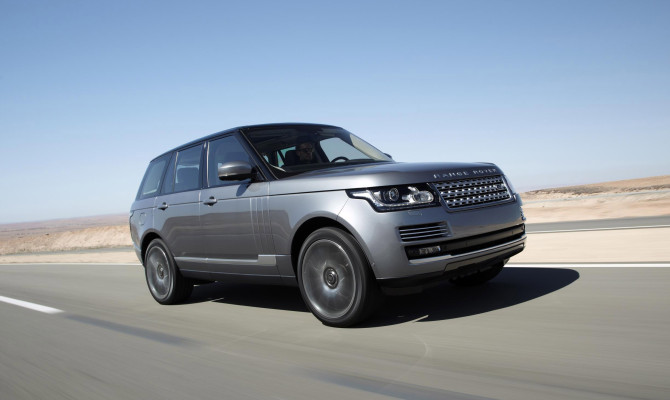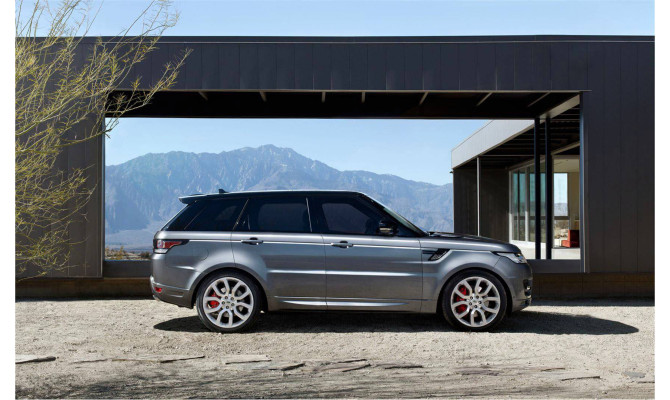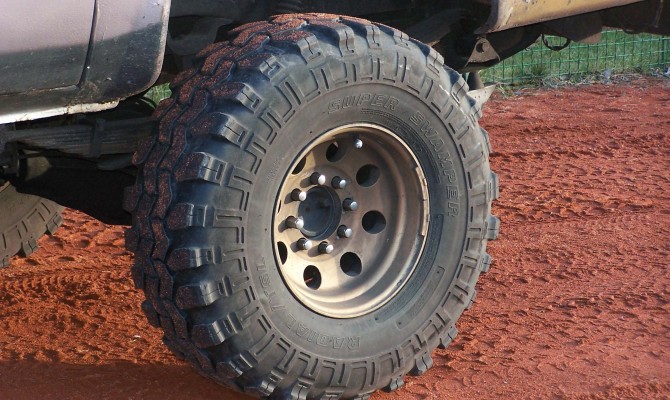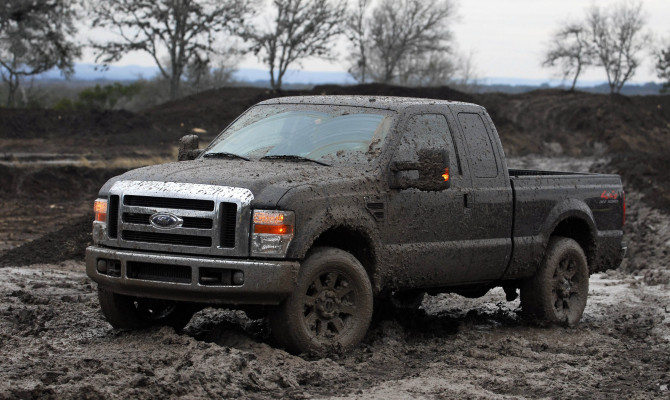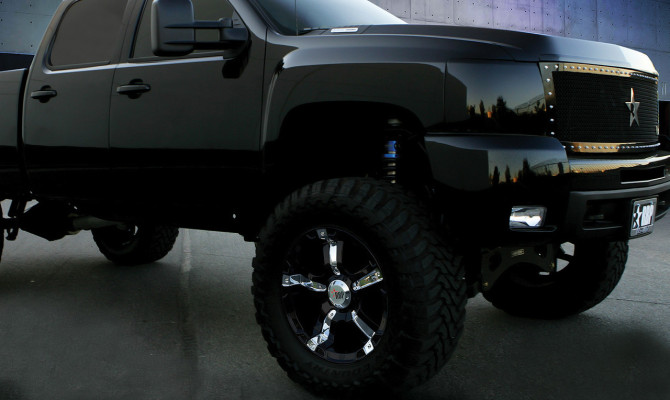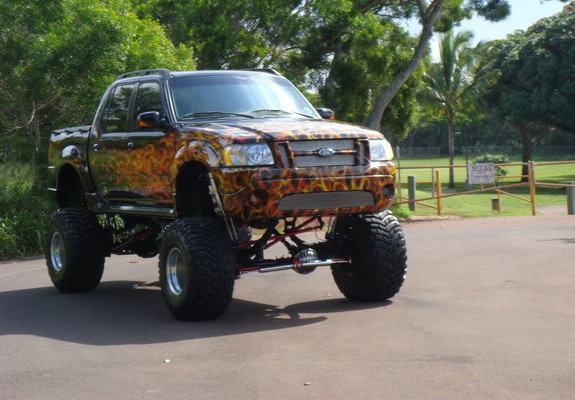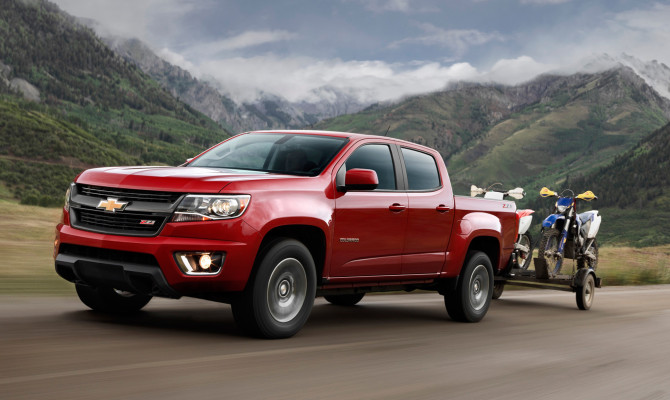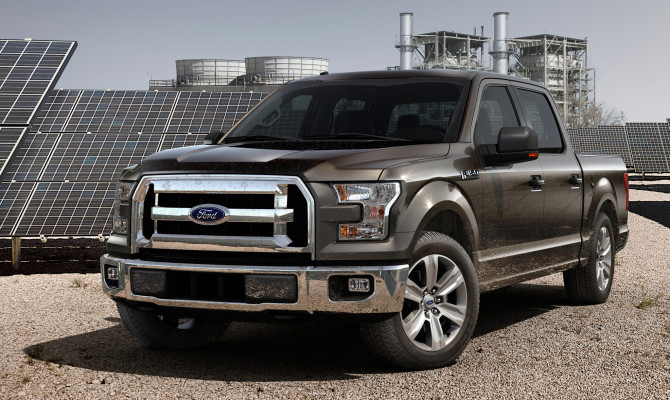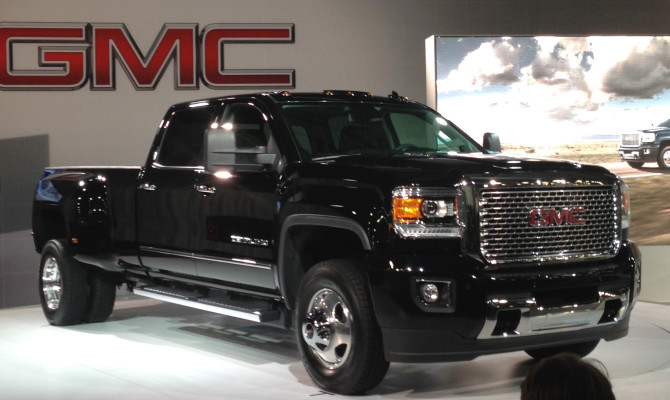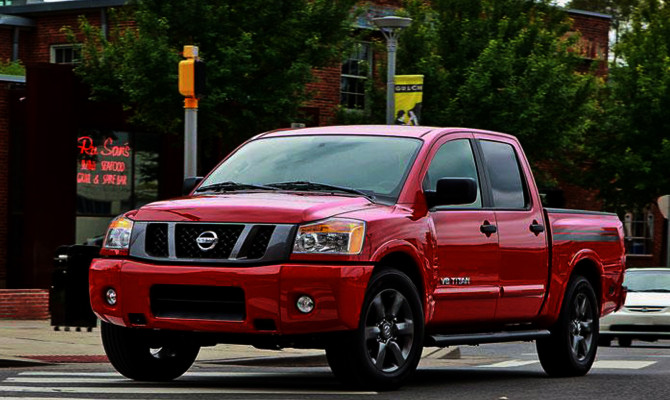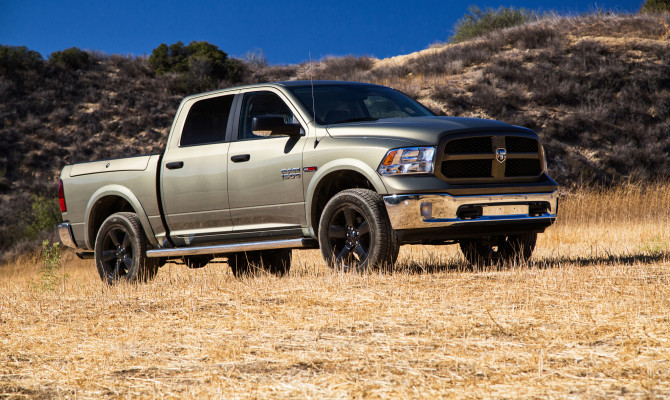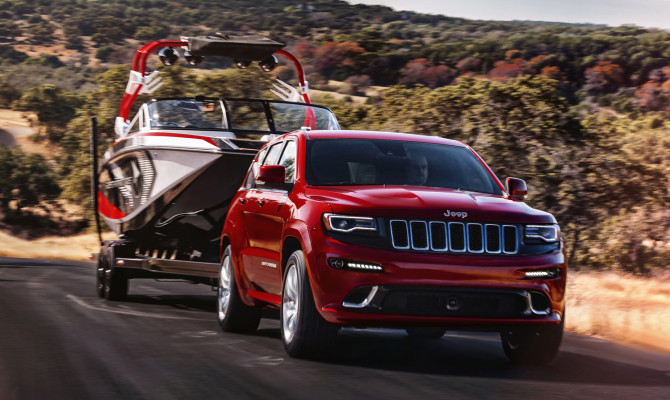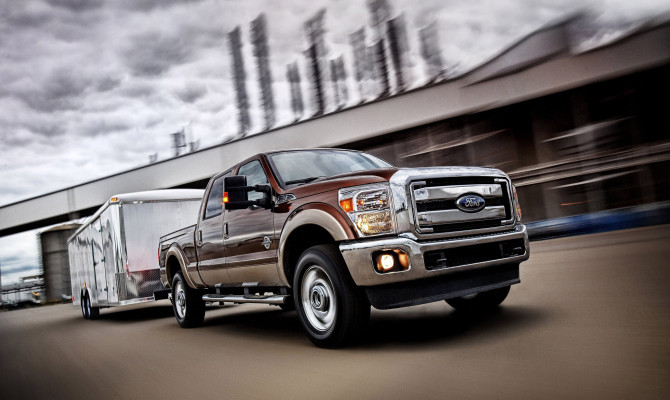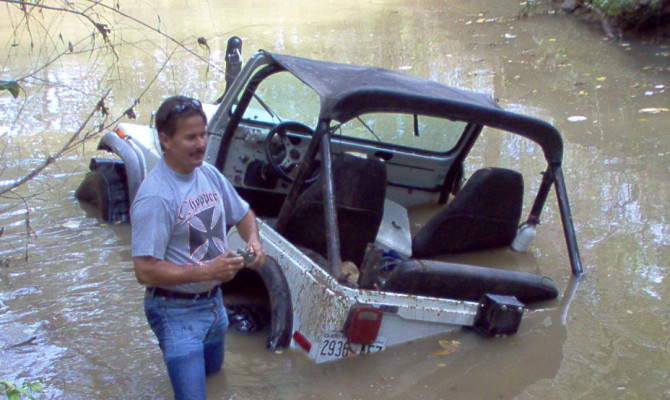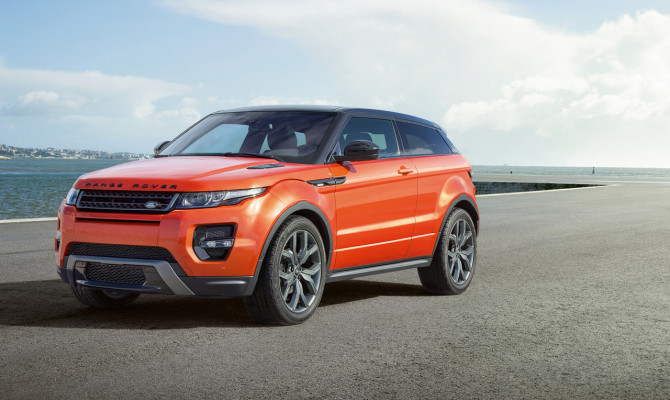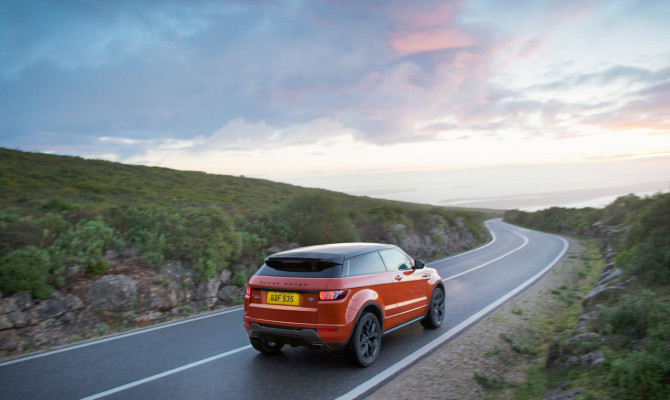“The all-new body features military grade, aluminum alloy sitting on a high strength steel frame…”
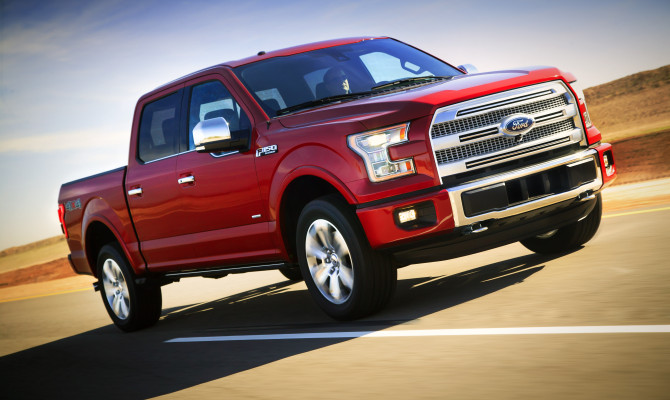
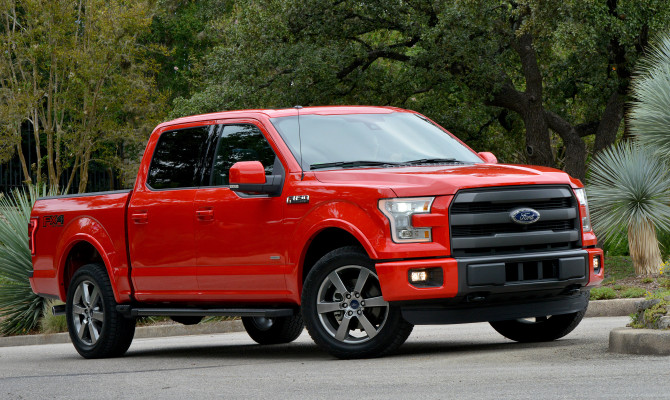
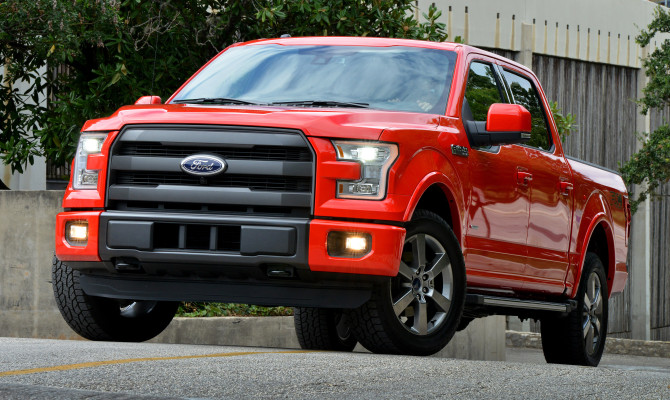
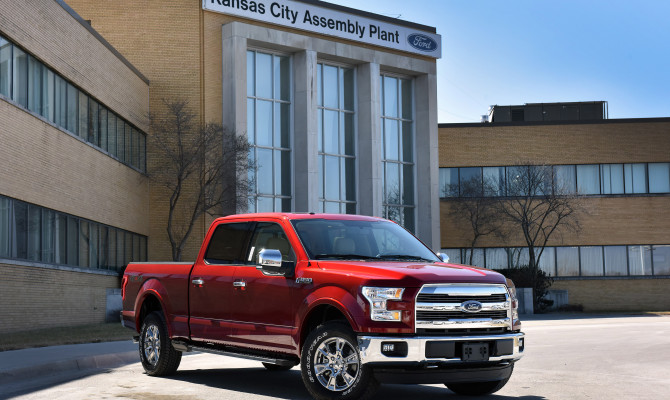
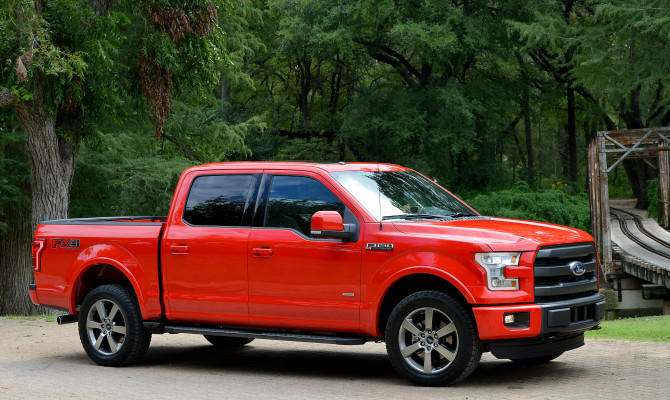
Ford is entering a brave new world with its extensive use of aluminum in its brand new F150.
It remains to be seen how many of its competitors will leap on the aluminum bandwagon but one thing for sure is this move will shake up the light-duty truck world.
Looks:
The all-new truck features smooth body lines with oversized fender flares, sleek headlights form part of the large oversized grille, with a blended in front bumper. These features truly stand out when you see this new F150 driving down the road and clearly differentiate it from the rivals. It’s very similar to the Atlas concept vehicle that was first shown a couple of years ago though it has been toned down a little in this latest version of the best-selling pickup in Canada.
The all-new body features military grade, aluminum alloy sitting on a high strength steel frame. The intent here is to create less overall weight without sacrificing strength. However, it is a bold move that may come back to haunt Ford. Real world driving of this vehicle will produce all kinds of scenarios. What happens when you need to fix the body panels, does the cost escalate to the point it is easier to write it off rather than repair? How will it hold up against constant towing or off-road use?
Time will tell, but you have to figure Ford has done some homework before unleashing the beast.
In The Cab:
It’s a spacious cab with a little more door width than the last version. You’ve got to like the 10-position adjustable driver’s seat, which is heated and ventilated. You won’t want to get out once you have arrived at the work site!
The Supercab and Supercrew models offer a fully flat floor providing ample cargo space. The beltline of the doors has been lowered a little and the front pillars are moved forward giving exceptional visibility. An available 8-inch LCD productivity screen on the instrument cluster can be set up to provide information tailored to your needs. Fuel consumption, towing, off-road applications offer precise information while driving. There is an optional 400-watt power inverter to can power your 110v items and, surely, that will become one hot option because of today’s workplace demands. Overall, I was impressed with the cab, very comfortable, good visibility and easy access to all the dash functions.
The panoramic roof option gives the truck a different feeling driving down the road. When the sun is shining the natural light warms the cab, it almost gives you the feeling you’re driving a convertible. I said almost.
Safety First:
Standard are front airbags with front driver and passenger seat mounted side airbags, safety canopy side curtain airbags.
Roadworthy:
My tester for the week was a SuperCrew short box version, although that sounds like an average size truck, it is not. The length of this vehicle is 6190 mm and parking in a small lot can be challenging. Backing in is your safest bet and with the use of the backup camera you are sure to get every inch of space available.
Steering is incredibly responsive and the ride is firm yet comfortable. Immediate power when you need it and plenty available to get this truck up to highway speed.
I quite enjoyed the drive and although my day was filled with errands, I still managed to relax as a drove throughout the city, only to have my bubble burst as I ran into never ending construction.
Verdict:
I found the new F150 to be slight improvement over the previous version with most of the improvements coming from the interior. The new body design is more of a personal preference and I think it will take me a while longer to come around. Give it a year and I will let you know if it was a hit or a miss.
Power:
Four engine choices here. 2.7L EcoBoost V6 with 325 horsepower and 375 lb-ft of torque, 3.5L EcoBoost V6 with 365 horsepower and 420 lb-ft torque, 3.5L Ti-VCT V6 with 282 horsepower and 253 lb-ft of torque and a 5.0L Ti-VCT V8 with 385 horsepower and 387 lb-ft
Pump frequency:
4X2
2.7L 12.2/9.2 L/100 km (city/highway)
3.5L 13.7/9.9 L/100 km (city/highway)
3.5L Ti 13.2/9.6 L/100 km (city/highway)
5.0L 15.5/10.6 L/100 km (city/highway)
4X4
2.7L 13.3/10.4 L/100 km (city/highway)
3.5L 14.2/10.4 L/100 km (city/highway)
3.5L Ti 13.9/10.5 L/100 km (city/highway)
5.0L 16.0/11.3 L/100 km (city/highway)
Warranty support:
Basic coverage: 3 year/ 60,000 km
Powertrain: 5 year/ 100,000 km
Sticker price:
XL – $24,899
XLT – $29,299
Lariat – $44,099
King Ranch – $60,499
Platinum – $62,499
“Range Rover is a luxurious vehicle that is right at home off-road or on...”
The 2015 Range Rover Sport offers reliability and good looks along with exceptional comfort.
In The Cab:
There’s a great level of comfort in this vehicle. The rear seats had plenty of room for adults and the cargo area was adequate. The heated leather wrapped steering wheel featured all the controls one needs to operate the equipment without distraction. The front and rear seats are heated.
Power tilt/slide front sunroof and a large glass roof over the rear seats allow plenty of natural light in. It is top shelf quality thru and thru. The only problem I had is with the touchscreen. There is a big delay when you select a feature and the placement of buttons on the centre stack is positioned in such a way that you can accidentally press a button as you rest your arm on the console.
From the driver’s perspective, the sight lines are amazing and the blind spot was almost non-existent
Safety-First:
Range Rover has a long history of making safe vehicles, and the Sport model is no exception. Driver and passenger front airbags are designed to provide head and chest protection, and the front seat side airbags protect against side impacts. There is also a full length curtain airbag to help reduce potential of head injury and roll over ejection for front and rear passengers. Inflatable knee bolster helps protect the driver against leg injury from the steering column.
Roadworthy:
Driving the Ranger Rover Sport is a smooth driving experience and the Supercharged V6 engine can really packs a punch when you need to. The impressive power plant and 8 speed transmission makes for a flawless transition from slow to fast all the while keeping the ride comfortable.
Power:
The engine is a 340 horsepower, supercharged 3.0 litre V6 that puts out 332 lb-ft of torque @2500 RPM with a 8 speed automatic transmission. This transmission features Command Shift that actively responds to your driving habits and road conditions by reconfiguring the shift patterns for optimum drivability in all situations and is mated with a two-speed electronically controlled transfer case. Four-wheel electronic traction control, hill descent control, and four corner air suspension with terrain response not only makes this vehicle manouevre well on the road but can take you on some of the roughest back roads British Columbia has to offer.
The terrain response system gives the Range Rover outstanding off-road capabilities; it adapts the response of the vehicles engine, transmission, centre coupling and chassis system to the terrain you’re driving on. It also maintains driver comfort as well as maximizing traction. Terrain response works continuously, but the driver can change the setting depending on the terrain conditions, for example: mud and ruts, snow, or sand. Hill descent control automatically controls and restricts the speed downhill, using anti-lock brake system, and improves driver control on slippery descents.
Verdict:
Range Rover is a luxurious vehicle that is right at home off-road or on.
Pump frequency:
14.0/10.5 L/100km (City/highway)
Warranty support:
4 year/ 80,000 km
Sticker price: $77,640
“Having good traction tires helps off-roaders get to where they need to go without being stuck…”
Driving down a gravel road to get to your favorite fishing hole or a day out with your family brings lots of enjoyment.
Getting there requires proper tires. Rocks, potholes, and rough terrain all play are part on how your tires perform.
The main function of any tire is to provide traction. Having good traction tires helps off-roaders get to where they need to go without being stuck. When shopping for an off-road/on road tire there are a few things to consider. Cheap tires are not the best option because “you get what you pay for” definitely applies here.
Some things to consider are high mileage tires and tread wear ratings. Some aggressive mud tires tend to wear a lot quicker than an all-terrain tire.
The next thing to consider is tire size. You can contact the manufacturer or check tire charts that give you variety of sizes to fit your vehicle. The height of your sidewall is important and should be chosen based on the conditions where you drive your truck most often.
If you only drive on the street then a low profile truck tire will be fine, but if you go off-roading then you are going to want more tire in between your rim and the ground. That way you will not bottom out on the rims when the tires encounter rough terrain off-road.
The size of the rim is a personal preference. Popular today are the larger sized rims. Just make sure that the rim and truck tire you choose will fit inside the wheel well of the truck, and don’t forget to upgrade your brakes to help stop this increase in weight.
The Wheel Rim width varies from truck to truck. It can be custom made to suit both on and off road driving conditions. The wheel rim width is rounded off to the nearest half inch of the tire. Usually, the best choice is to have the rim width at about 90 percent of the tread width of the tire. Adequate air pressure is important for a good tire life, handling, and traction. Look through your truck’s owner’s manual, on the sticker inside the driver’s door, or look on the tire itself to find the correct air pressure that you need to maintain them.
Seasonal changes can affect the air pressure of the tires. Cold temperatures are responsible for dropping the air pressure of the tires, and warm temperatures are responsible for increasing the air pressure. A 10 percent swing in the temperatures causes a 1lb. change in the air pressure. Sudden changes in temperature are a good time to check the pressure of the tires.
You can reduce the wear and tear of the truck’s tires by rotating them often. Rotating the tires, keeps the tread wear balanced and can really help when slippery and wet conditions occur. A simple rule about rotating your tires is to do it on every other oil change. Doing this consistent basis, will make the tires last longer and allow a comfortable ride for many, many kilometres.
“The popularity of E-Lockers has increased dramatically ino the last few years as more people take to off-road driving for fun.”
Often when driving down a logging road you encounter mud on one side of the road.
No big deal, you think.
You slow down and travel through it, only to find out you are losing traction and the wheel starts to spin. Before you know it, you are stuck. Now it’s a big deal.
Firstly, let’s look at why you find yourself in this predicament. It all comes down to the differential and I’m not talking about math but the differential on your vehicles axle.
The standard differential, or what is referred to as an open diff, is generally standard on most new trucks. The open diff holds the ring gear and a set of gears called spider gears. These spider gears are responsible for allowing a vehicle to negotiate a turn and allow the outside wheel to travel farther and turn faster than the inside wheel.
This type of open design works great for most of the pickup trucks on the road today. However, when a truck with an open differential meets loose gravel, or a wet section of the road, it directs power to the wheel with the least amount of resistance. The result is the wheel on the loose surface spins free, while the other wheel on the better traction surface provides little or no power. Limited Slip differentials are designed to “limit” the tendency of an open diff, and send power to a wheel that lacks traction, by redirecting the power to the other wheel. The Limited Slip differential will send power to both wheels equally when traveling straight, and when one wheel spins due to a lack of traction, the differential will automatically provide torque to the other wheel with traction. Limited Slip differentials limit the loss of torque to a slipping wheel through clutches, gears, and other methods, depending on the unit.
But it will not provide 100 percent lock up of the differential in extreme situations such as when a wheel completely loses traction. Limited Slips are recommended for vehicles driven daily and are used in many applications where traction is sometimes needed as in emergency vehicles. They are also ideal for front axles of 4×4 vehicles that are not equipped with front hubs that can be disengaged. A locking differential or “Locker” uses a mechanism that allows left and right wheels to “lock” to each other and turn at the same speed regardless of which axle has traction or how little traction a slipping wheel has. This means tractionpower can be sent to a wheel that may be planted firmly on the ground while the other wheel of the axle is completely off the ground.
In this situation, an open differential will spin the free wheel, sending absolutely no torque to the wheel in the ground. A Limited Slip in this situation will send some torque to the wheel on the ground but possibly not enough to provide any forward momentum. The popularity of E-Lockers has increased dramatically ino the last few years as more people take to off-road driving for fun. The lockers are activated by a switch inside the vehicle and are used on most modern 4x4s. The price range for the lockers is generally between $1,860 and $3,350 depending on the truck.
“One of the more popular things to do these days is to install a suspension lift along with larger tires and wheels.”
Purchasing a new or used truck is exciting, but personalizing it is even more fun!
Believe me when I tell you, buying the truck is the cheap part. I have seen people over the years spend upwards of $25,000 or more on customization. One of the more popular things to do these days is to install a suspension lift along with larger tires and wheels. If you’re going to tackle this yourself, here are a few things you should know.
Installation: Many manufacturers offer manuals for installing lift kits but some installations are quite intricate, requiring some welding or cutting in order to add some necessary components. In this case, having a mechanic or a few knowledgeable friends around will help make the job go smoothly.
Additional Modifications: Upgrading to taller tires also means that a number of components may require part upgrades or some tuning to compensate. For instance, a truck’s engine is tuned at specific gear ratios to propel the vehicle. When adding taller tires, the gear ratios must be changed accordingly, since the engine has to spin much larger, heavier tires. You will also be required to purchase a speedometer recalibration tool, so you have an accurate reading. Again, consult with more experienced individuals for further insight.
Highway Driving: Larger, wider tires can sometimes result in instability on roads or a noisy, uncomfortable ride, particularly at high speeds. Also, more aggressive off road tires tend to wear faster on the highway and traction might not be as great as you would expect on wet roads.
Weight: Larger tires are heavier, which can put a lot of strain on your suspension, particularly if it is a stock suspension. Trusted, durable suspension components and lighter aluminum wheels can sometimes help to reduce the strain.
Handling: Adding a truck suspension lift kit will undoubtedly raise the vehicle’s centre of gravity, resulting in less stable turns. This is a common problem when installing lift kits, but is mostly just a matter of becoming accustomed to a vehicle’s change in performance.
Legality: Some lift kits create such a serious change in your suspension system that it may not be legal. Check the suspension regulations within your province to be sure.
A Few Useful Accessories: Before installing a lift kit, it’s a good idea to first examine if any components will be affected by your vehicle’s new height. Here are a few useful accessories that may need to be upgraded:
Brake Upgrades: Stock brakes do not always accommodate larger tires, or will wear easily due to the added strain.
Drivetrain and Differential: Axles, gears, differential covers, lockers and more ensure that your drivetrain is up to par with your suspension.
Replacement Parts: Longer Control Arms and Track Bars to compensate for the additional height of your truck.
Shocks: For those taller lifts, longer shocks will ensure the smoothest performance both on and off road.
Other Parts: Steering linkage, slip yoke, drive shaft length, u-joint angle, and brake lines are all worthy of consideration before installing suspension lift kits.
Also, search the internet.
There are many sites which offer complete instructions on various suspension lifts. You can download a copy before you make the purchase, and know exactly what is in involved.
“The new Nissan Titan offers a roomy interior that rivals the other popular full-size trucks on the market today.”
Truck lovers could fill an afternoon running a careful eye over the new trucks at the Vancouver auto show.
Here are my five picks for special attention:
2015 Chevrolet Colorado
The all-new design is turning heads all across Canada. This mid-size truck fills a void here. Still expected to work as hard as a full-size truck, the Colorado can tow more than 3,039 kilograms (6700 lbs) a 2.5L I-4 engine is standard with an optional 3.6L V6 with a six speed automatic transmission. This truck includes all the modern day technologies including 4g LTE hotspot with WI-FI connection through OnStar, which provides service for seven devices.
Base price: $21,695.
2015 Ford F150
The combination of a body made of aluminum body and high strength steel in its frame make this truck up to 317 KG (700 lbs) lighter. This truck was inspired by Ford’s concept vehicle, the Atlas. It has 11 new class-exclusive features, including 360-degree camera view, integrated loading ramps stowed in the pickup bed, 400-watt power outlets inside the cab, LED headlights and side view mirror spotlights, and remote tailgate release. There are four engine choices, the 3.5L Ti-VCT V6, 2.7L EcoBoost, 5.0 Ti-VCT V8, and the 3.5L EcoBoost.
The 3.7L V6 delivers 282 horsepower and 253 lb-ft of torque. The 2.7L V6 has 325 horsepower and 375 lb-ft of torque. The 5.0 V8 has 385 horsepower with 387 lb-ft of torque and the 3.5L V6 is pushing 282 horsepower and 253 lb-ft of torque. These are all capable engines depending on your requirements.
Base price: $24,899
2015 Ram 1500 EcoDiesel
It is the only light duty diesel available here. It has a 3.0 L V6 Diesel engine with a torqueflite eight speed transmission. Not only will it give you 420-pound feet of torque and plenty of towing capabilities, it will also reduce CO2 emissions and runs on B20 Biodiesel. Many trims are available from work-truck-ready to full luxury. This truck has something for every buyer.
Base price: $31,140
2015 GMC 3500HD Denali
It is a beast. This truck is built to pull with 10,251 KG (22,600 lbs) of trailer towing capacity. The 6.6L V8 turbo engine delivers 397 hp and 765 lb ft of torque and is paired with a 1000 series Allison transmission. With interior upgrades such as triple door seals, hydraulic powertrain and body mounts, 12 way power adjustable bucket seats, heated leather wrapped steering wheel and a Bose sound system you can operate this beast and still feel comfortable doing so.
Base price: $67,305
2015 Nissan Titan
This Titan can tow up to 4309 kg (9,500lbs) thanks to 385 lb-ft of torque from its 5.6 L DOHC 32 valve V8 engine producing 317 hp at 5,200 rpm.
If off-road driving is part of your plans then the Titan is ready. With the Prox-4x package you get heavy duty skid plates protect the oil pan, fuel tank, transfer case and lower radiator. The 4WD system utilizes a shift on the fly two-speed transfer case, which allows you to 4WD at a moment’s notice. Low range can be selected when the terrain requires it. The electronic locking rear differential is ready at a flip of a switch giving much need traction on slippery surfaces. Rancho performance shocks are available with the off-road package. The new Nissan Titan offers a roomy interior that rivals the other popular full-size trucks on the market today.
Base price: $40,498
“Remember, your towing capacity is equal to the capacity of the weakest link in the system.”
Towing a trailer just might be one of the most stressful driving situations for some truck owners. For one thing, it is not easy to manouevre around corners and change lanes with that extra length behind your truck. Backing up can be challenging. And towing up a steep hill can be tough on your truck. Whether you tow a boat, car, snowmobiles, or motorcycles, custom truck accessories can make towing less nerve-wracking.
Don’t Tow Too Much Weight
Pulling too much weight can be very dangerous. Check your owner’s manual to find your vehicle’s towing capacity, including the maximum gross trailer weight and tongue weight it can handle. Tongue weight is the downward force exerted on the hitch ball by the trailer coupler. In most cases, it is about 10 to 15 percent of gross trailer weight. Tongue weight of up to 300 pounds can be measured on a household scale by resting the trailer coupler on the scale and placing the scale on a box so that the coupler is at its normal towing height. The trailer must be fully loaded and level.
Use the Right Hitch and Other Equipment
Just as each vehicle has a maximum towing capacity so too does each trailer hitch, hitch ball, ball mount and safety chain. To tow safely, make sure every component you use is ready to handle the weight of your fully loaded trailer. Remember, your towing capacity is equal to the capacity of the weakest link in the system.
Choosing a Trailer Hitch
All trailer hitches feature a class rating, as well as a weight rating, so be sure the hitch can accommodate the loaded trailer. For instance, Reese Class 2 (avg $159) hitches have a maximum rated capacity of 350 pounds tongue weight and 3,500 pounds gross trailer weight. Class IV (avg $175) receiver-style hitches have a maximum capacity of 1,200 pounds tongue weight and 12,000 pounds gross trailer weight.
If you need more towing capacity than the traditional receiver-style weight distributing hitch, then you need to step up to a fifth-wheel or gooseneck hitch. Prices start at $650.
Choosing a Hitch Ball
If you have a drawbar style hitch, the hitch ball usually is built right into it. But if you have a receiver-style hitch, you’ll need to choose your own hitch ball.
Like vehicles and trailer hitches, hitch balls also are assigned a maximum tongue weight and gross trailer weight rating.
Hitch balls are made from a variety of materials, and some are available in a choice of finishes, including chrome. They cost about $12 to $14.
The hitch ball diameter must be the same diameter as the trailer coupler (1 7/8 inches, 2 inches or 2 5/16 inches).
The shank diameter of the hitch ball should be the same as the hole diameter in the ball mount.
The shank length should be long enough to allow at least two threads to be visible when the hitch ball is installed and the nut completely tightened.
Load Your Trailer Properly
Rule of thumb is roughly two-thirds (60 to 66 percent) of the gross load weight should be positioned toward the front half of the trailer. Place large or heavy objects on the trailer first. Tie these objects down securely and from several angles to ensure they do not shift. Pack remaining items in a manner that maintains balance of the trailer. Once the trailer is loaded, double-check the positioning and stability of the cargo. Better safe than sorry.
“The featured projector style headlamps with LED fog lights made the front end of the Platinum Edition tester look like a piece of jewelry!” (more…)
“Think about that water entering areas of your truck, believe me, you would prefer it did not do so!”
Spring-like weather means the back woods trails are already beckoning us out here in the West.
While my Driveway colleagues seem to have spent the last month ploughing through snow and ice back East, I’m raring to get out there in our beautiful back yard.
However, there are a few things to think about before you head out into the back roads of British Columbia this spring, to find yourself driving through those swollen creeks and rivers. (more…)
“The Evoque is not just all show and no go but a fun vehicle to drive.”
The 2015 Range Rover Evoque is like a finally tailored suit that fits comfortably in any situation.
Looks
It is one of the nicest crossovers out there, available in a 5-door, or a 3-door coupe. The Evoque has a streamlined body and a beautiful roof line that tapers towards the back. The front end takes its styling cues from its big brother the Range Rover.
In The Cab
A well-appointed interior featuring leather seats, driver adjustment including recline, height, lumbar support and memory, 60/40 split rear with centre head restraint, oxford leather wrapped steering wheel with audio controls. Central 8-inch touch screen display in the central hub for features such as audio, video, phone and navigation. It also provides a screen for the backup camera and a unique 360fdegree, real time view of the surrounding area via the five discreetly placed cameras. All controls and knobs found on the centre dash area are well placed and easy to operate by the driver without being distracted. The sound system is provided by Meridian and features a 380-watt 11-speaker system that is standard and an optional 825-watt, 17-speaker system. The auto dimming rear view mirror is a nice feature and accent lighting around the centre console, footwell, glove box, and load compartment are a nice touch. A tire pressure monitoring system monitors your air pressure.
My tester was the 3-door coupe with lots of room inside although I did find it a bit difficult getting in and out of the back seats. With the position of the rear seats, I didn’t notice the lower roof angle being an problem. Leg room was at a bit of a premium, but it is the case in most coupes.
Safety First
A high level of safety features are provided including driver and passenger airbags, knee airbags, side curtain and thorax airbags. Four wheel disc brakes, traction control and stability control are all standard equipment.
Roadworthy
I found the push button terrain response selection buttons are in an area that can easily be pushed by accident. Place your hand the wrong way on the centre console and you find yourself in off-road mode. Once the terrain setting has been chosen (purposefully), the Range Rover takes on a completely new personality. Hill control graphics show up on the instrument panel and it can crawl like a snake down any steep terrain. If only they added height adjustment then you could really go four-wheeling.
Power
The Evoque power plant is a turbo charged 2.0-litre Si4 direct injection engine that produces 240 horsepower and can achieve 0-100 km in 7.1 seconds. The engine is mated with a six speed automatic transmission with rally style paddle shift controls mounted on the steering wheel. The engine provides plenty of power and if not for the turbo lag, it would be amazingly quick at passing. I always get a kick from the Range Rover shifters. When the vehicle starts up the rotary gearshift rises up so you can turn it to select the position you require.
Verdict
The Evoque is a very well thought out vehicle. I love the shape and stance. It is not just all show and no go but a fun vehicle to drive.
Pump frequency:
11.3 / 7.9 L/100 km (City/highway)
Warranty support:
4 year/80,000 km Limited warranty
6 year/ unlimited mileage Corrosion perforation warranty
Sticker price:
Evoque Pure $47,695
Evoque Pure City $49,895
Evoque Pure Plus $52,195
Evoque Dynamic $60,895
Evoque Prestige $61,295
Evoque Autobiography $64,595
Recent Comments
- { Enjoyed your Forest of Bowland in the BMW X5M, particularly the photo of the BMW in front of the main part of Stonyhurst College where... }
- { Bantam designed the Jeep, not Willy's or Ford. The American military gave the original Bantam prototype to Willys and Ford to copy. There is plenty... }
- { All Escalades come with a 6.2-lilter V8 engine that produces 420 horsepower. A six-speed automatic is the only transmission offered and drives the rear wheels.... }
- { Alexandra is an excellent journalist. }
Popular Posts
- Journey to a ‘Sparkling’ Luxury Okanagan Resort “Four lucky readers will put a Dodge Journey’s weekend-...
- The Need For Speed: Hike Those Highway Limits More than half of those polled believe the province sho...
- Drives-U-Crazy… Erratic drivers. An early morning drive from Kelowna to Vancouver is nor...
- Readers Respond: The Pros and Cons of Increasing B.C. Speed Limits Increasing the speed limits will only increase risk to...
- Honda CR-V Review: The Compact Crossover To Get Things Done The CRV is a very stylish and aerodynamic crossover veh...


